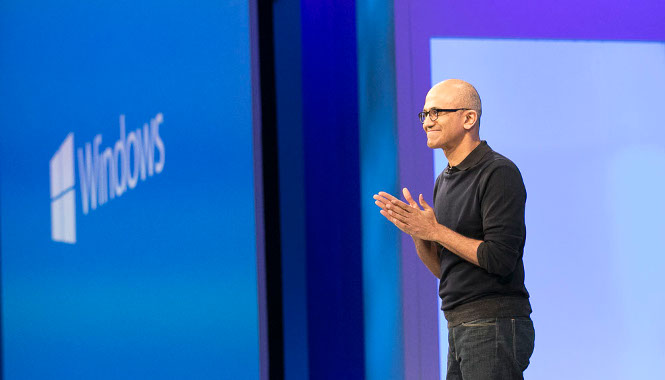
Microsoft’s developer conference Build 2015 is drawing to a close in San Francisco as the world celebrates Labour Day and a long weekend.
The event is only the latest step in chief executive Satya Nadella’s quest to turn the company around after its difficult tenure under previous leader Steve Ballmer. With the company’s sprawling product line covering everything from video games to holographs, it can be easy to become bogged down in the headlines.
That in mind, here’s the key takeaways from the conference:
1. Internet Explorer replaced by edgier successor
Though Microsoft’s flagship browser retains some 60% of the global market for web surfing, many have called for it to be replaced in the wake of modern rivals such as Firefox and Google Chrome.
Responding to this, the software vendor has unveiled its successor Microsoft Edge, promising to "blur the edge between consumption and creation". In real terms this means adding extra functions, most significantly around the personal assistant program Cortana.
A trailer for the browser also emphasises greater predictive capabilities in the browser bar and tablet-friendly annotations. How useful the latter will prove to be is mysterious at this point.
2. Windows phones convert any computer into PC
As CBR has previously argued, mobiles may be changing the way we work but the desktop is still irreplaceable when it comes to doing work that’s more complicated that responding to your emails.
Microsoft has clearly taken note, and with the launch of Continuum for Phones the company is hoping to convert any screen into a desktop computer, complete with a person’s apps, software and keyboard shortcuts.
"What we’re trying to show here today, is our unique vision for phones and enabling them to scale up to a full PC-like experience," said Joe Belfiore, CVP of the operating systems group.
3. A $20bn cloud play is in the works
Like many legacy software vendors Microsoft has been somewhat left behind by the cloud revolution, and is now having to work its way to the front of the pack. (Though bear in mind it is still the largest software firm by revenue and market capitalisation.)
At Build, Nadella sat down with financial analysts to say what he was doing to address this problem, setting a lofty target of $20bn in revenue from cloud services by the fiscal year ending June 2018, some $14bn more than the forecasted revenues for this year.
Much of the success will hinge on whether the Azure cloud platform can compete with Amazon Web Services, with Microsoft’s Seattle rival leading the market with its low cost products.
4. Devs wanted for wearables app creation
The wearables market is likely to prove lucrative not merely for hardware makers such as Apple, Samsung and Sony, but also the many software developers whose work has made smartphones so modular.
Though Microsoft’s Band smartwatch has been criticised for being functional rather than flash – unlike the Apple Watch – the company is hoping to make a larger dent in the smartwatch market than it did in the mobile one.
As such Microsoft has rolled out its long awaited source development kit (SDK) for Band, granting developers access to sensors, tiles and notifications. In a cross-platform move the kit will also support Android and iOS as well as Windows.
5. Microsoft joins rush down analytics rabbit hole
Despite claims that the Internet has diminished the value of information the currency of data appears to have gone the other way, with every IT company looking to flog its own analytics product.
Mindful of this, Microsoft spent part of the day talking up an array of analytics offerings, including the How Old Do I Look App, which uses the Azure Stream Analytics and PowerBI platforms to work out how many birthdays you have counted based on a photograph.
More practical uses of the platform include mapping genomes for indicators of hereditary illness, and Project Oxford’s use of analytics to interpret multimedia, which could make videos and images as searchable as text.






